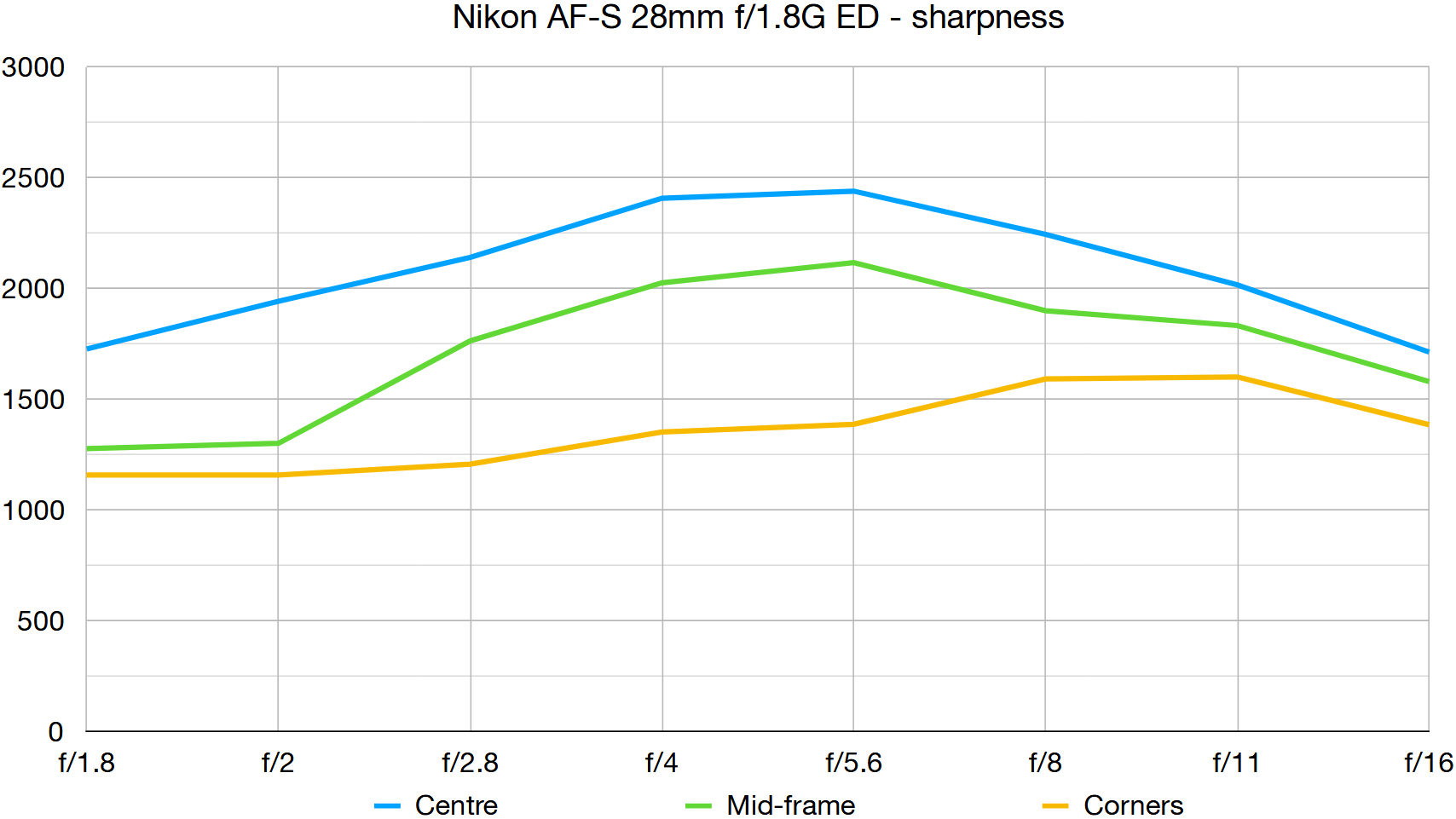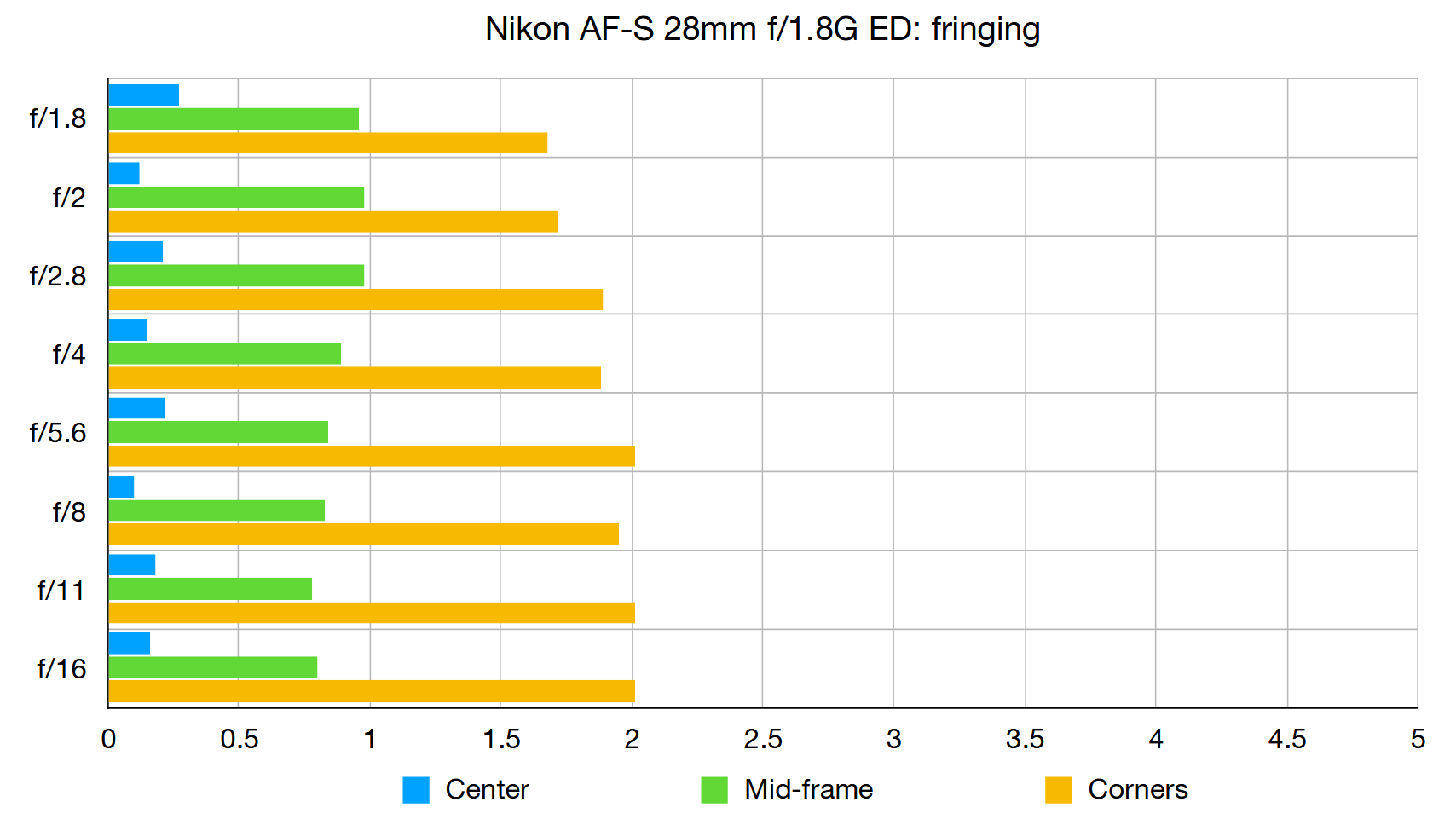Digital Camera World Verdict
Only about half the weight and little more than a third of the price Nikon’s faster AF-S 28mm f/1.4E ED, the f/1.8G is a much better buy for most photographers. The generous but not overly extreme wide-angle field of view makes it very versatile for street photography and general walkabout shooting, while the fast aperture rating enables handheld shooting even under low lighting conditions, both indoors and out. Image quality and all-round performance make it a very attractive prime proposition.
Pros
- +
Compact and lightweight
- +
Fast f/1.8 aperture
- +
Solid construction
Cons
- -
Pricey for an f/1.8 prime
- -
Not fully weather-sealed
- -
Poor autofocus for movie capture
Why you can trust Digital Camera World
The Nikon AF-S 28mm f/1.8G is a handy little lens. There’s no denying the zooming versatility of the Nikon AF-S 24-70mm f/2.8E ED VR but it’s a big, hefty lens at over a kilogram. Surely, the greatest thing about any interchangeable-lens camera is that you can mount the right tool for the job. This 28mm prime is much more compact, less than a third of the weight, and gives you much more manageable shooting package, as well as being more than an f/stop faster. And naturally, you can swap to a similarly convenient 24mm, 50mm or 85mm f/1.8 prime when you need to and reap the same rewards.
Specifications
Mount: Nikon F (FX)
Full-frame: Yes
Autofocus: Yes
Stabilization: No
Lens construction: 11 elements in 9 groups
Angle of view: 75 degrees
Diaphragm blades: 7
Minimum aperture: f/16
Minimum focusing distance: 0.25m
Maximum magnification ratio: 0.22x
Filter size: 67mm
Dimensions: 73x81m
Weight: 330g
Key features
Typical of Nikon's AF-S f/1.8 wide-angle primes, this lens features a fast and whisper-quiet ring-type ultrasonic autofocus system. It has the usual M-M/A switch for selecting manual focusing or autofocus, the latter with priority given to manual override. It’s often a benefit, as you don’t have to wait for autofocus to try (and fail) to lock onto tricky subjects, and can also make the change immediately in continuous autofocus mode. Also typical is the focus distance scale mounted beneath a viewing window, which is generally absent in lenses with stepping motor-based autofocus.
As with the AF-S 20mm and 24mm f/1.8G ED lenses, the 28mm features two aspherical elements to boost sharpness and reduce distortion and spherical aberrations. It also features the same blend of Nano Crystal Coat and Super Integrated Coating to minimize flare and ghosting. However, Nikon didn’t feel the need to add any ED (Extra-low dispersion) elements in the design of this lens, whereas the 20mm and 24mm have two apiece.
Build quality feels sturdy and solid, despite the lightweight 330g construction, and the lens features a rubber weather-seal ring on its metal mounting plate.
Performance
Sharpness is excellent throughout the whole aperture range. Center-sharpness is good even wide-open at f/1.8 and the area between the center and the edges comes on strong at f/2.8. Color fringing and distortion are kept to very low levels but vignetting can be quite noticeable when shooting wide-open. The minimum focus distance of 0.25m or just under 10 inches enables a fairly tight depth of field for isolating close objects against a blurred background.
Lab results
We run a range of lab tests under controlled conditions, using the Imatest Master testing suite. Photos of test charts are taken across the range of apertures and zooms (where available), then analyzed for sharpness, distortion and chromatic aberrations.
We use Imatest SFR (spatial frequency response) charts and analysis software to plot lens resolution at the center of the image frame, corners and mid-point distances, across the range of aperture settings and, with zoom lenses, at four different focal lengths. The tests also measure distortion and color fringing (chromatic aberration).
Sharpness:
Center-sharpness is excellent at f/1.8, absolutely superb from f/2 all the way through to f/11, and excellent again at f/16. Mid-frame sharpness comes on strong at f/2.8, and edge/corner-sharpness remains very good even at f/1.8.
Fringing:
Color fringing towards the edges and corners of the frame is of a low order and remains very consistent throughout the whole aperture range.
Distortion: -0.96
There’s a touch of barrel distortion but it’ll generally go unnoticed and is easy to correct with in-camera options or while editing images.
The best camera deals, reviews, product advice, and unmissable photography news, direct to your inbox!
Verdict
Only about half the weight and little more than a third of the price Nikon’s faster AF-S 28mm f/1.4E ED, the f/1.8G is a much better buy for most photographers. The generous but not overly extreme wide-angle field of view makes it very versatile for street photography and general walkabout shooting, while the fast aperture rating enables handheld shooting even under low lighting conditions, both indoors and out. Image quality and all-round performance make it a very attractive prime proposition.
Read more:
• Best camera lenses to get
• Best Canon lenses
• Best Nikon lenses
• Best Sony lenses
Matthew Richards is a photographer and journalist who has spent years using and reviewing all manner of photo gear. He is Digital Camera World's principal lens reviewer – and has tested more primes and zooms than most people have had hot dinners!
His expertise with equipment doesn’t end there, though. He is also an encyclopedia when it comes to all manner of cameras, camera holsters and bags, flashguns, tripods and heads, printers, papers and inks, and just about anything imaging-related.
In an earlier life he was a broadcast engineer at the BBC, as well as a former editor of PC Guide.





